An Extended FullEX Method: An Application to the Selection of Online Orders Distribution Modes Based on the Shared Economy
Abstract
1. Introduction
2. Theoretical Background of the Considered Problem
2.1. Urbanization, E-Commerce, and LMD Challenges
2.2. Possibilities for LMD Improvement
2.3. Collaboration Strategies for LMD Improvement
2.4. Distribution Modes Based on the Sorting Center Concept
2.5. Application of MCDM and Other Operations Research Methods in Last-Mile Delivery Optimization
3. Methodology
3.1. A Proposal of Extended FullEX Method for Determining Criteria Weights
3.2. MARCOS Method for Ranking the Alternatives
4. Case Study
- Locations of postal operators’ offices–both for universal postal service and express and courier services;
- Locations of parcel lockers for package delivery;
4.1. Considered Alternatives
4.1.1. Traditional Model—Status Quo (A1)
4.1.2. Unified Consolidation Center (A2)
4.1.3. Urban Hubs (A3)
4.1.4. Hybrid Delivery Model—Consolidation Center and Urban Hubs (A4)
4.2. Considered Criteria
4.2.1. Environmental Criteria
4.2.2. Technical Criteria
4.2.3. Economic Criteria
4.2.4. Social Criteria
5. Results and Discussion
5.1. The Implementation of the Extended FullEX Method
5.2. The Implementation of the MARCOS Method
5.3. Discussion
5.3.1. Assessment of the Reliability of the Collected Answers
5.3.2. Sensitivity Analysis by Introducing a Control Group of Experts
5.3.3. Comparative Analysis
5.3.4. Contribution to Knowledge and Managerial Implications
6. Conclusions
Author Contributions
Funding
Institutional Review Board Statement
Informed Consent Statement
Data Availability Statement
Conflicts of Interest
Abbreviations
| LMD | last-mile delivery |
| MARCOS | measurement of alternatives and ranking according to compromise solution |
| MCDM | multi-criteria decision-making |
| UCC | urban consolidation centers |
Appendix A. Answers from Expert 1
| C1 | C1 | C1 | C1 | C1 | C1 | C1 | C1 | C1 | C1 | C1 |
| C2 | C3 | C4 | C5 | C6 | C7 | C8 | C9 | C10 | C11 | C12 |
| C2 | C2 | C2 | C2 | C2 | C2 | C2 | C2 | C2 | C2 | |
| C3 | C4 | C5 | C6 | C7 | C8 | C9 | C10 | C11 | C12 | |
| C3 | C3 | C3 | C3 | C3 | C3 | C3 | C3 | C3 | ||
| C4 | C5 | C6 | C7 | C8 | C9 | C10 | C11 | C12 | ||
| C4 | C4 | C4 | C4 | C4 | C4 | C4 | C4 | |||
| C5 | C6 | C7 | C8 | C9 | C10 | C11 | C12 | |||
| C5 | C5 | C5 | C5 | C5 | C5 | C5 | ||||
| C6 | C7 | C8 | C9 | C10 | C11 | C12 | ||||
| C6 | C6 | C6 | C6 | C6 | C6 | |||||
| C7 | C8 | C9 | C10 | C11 | C12 | |||||
| C7 | C7 | C7 | C7 | C7 | ||||||
| C8 | C9 | C10 | C11 | C12 | ||||||
| C8 | C8 | C8 | C8 | |||||||
| C9 | C10 | C11 | C12 | |||||||
| C9 | C9 | C9 | ||||||||
| C10 | C11 | C12 | ||||||||
| C10 | C10 | |||||||||
| C11 | C12 | |||||||||
| C11 | ||||||||||
| C12 |
| C1 | C2 | C3 | C4 | C5 | C6 | C7 | C8 | C9 | C10 | C11 | C12 | |
|---|---|---|---|---|---|---|---|---|---|---|---|---|
| A1 | 9 | 9 | 9 | 8 | 8 | 7 | 2 | 1 | 5 | 1 | 9 | 1 |
| A2 | 6 | 4 | 3 | 5 | 9 | 7 | 8 | 5 | 6 | 6 | 7 | 4 |
| A3 | 5 | 6 | 7 | 2 | 3 | 2 | 7 | 2 | 7 | 4 | 8 | 8 |
| A4 | 2 | 1 | 1 | 2 | 5 | 6 | 9 | 3 | 6 | 7 | 8 | 9 |
Appendix B. Answers from Expert 2
| C1 | C1 | C1 | C1 | C1 | C1 | C1 | C1 | C1 | C1 | C1 |
| C2 | C3 | C4 | C5 | C6 | C7 | C8 | C9 | C10 | C11 | C12 |
| C2 | C2 | C2 | C2 | C2 | C2 | C2 | C2 | C2 | C2 | |
| C3 | C4 | C5 | C6 | C7 | C8 | C9 | C10 | C11 | C12 | |
| C3 | C3 | C3 | C3 | C3 | C3 | C3 | C3 | C3 | ||
| C4 | C5 | C6 | C7 | C8 | C9 | C10 | C11 | C12 | ||
| C4 | C4 | C4 | C4 | C4 | C4 | C4 | C4 | |||
| C5 | C6 | C7 | C8 | C9 | C10 | C11 | C12 | |||
| C5 | C5 | C5 | C5 | C5 | C5 | C5 | ||||
| C6 | C7 | C8 | C9 | C10 | C11 | C12 | ||||
| C6 | C6 | C6 | C6 | C6 | C6 | |||||
| C7 | C8 | C9 | C10 | C11 | C12 | |||||
| C7 | C7 | C7 | C7 | C7 | ||||||
| C8 | C9 | C10 | C11 | C12 | ||||||
| C8 | C8 | C8 | C8 | |||||||
| C9 | C10 | C11 | C12 | |||||||
| C9 | C9 | C9 | ||||||||
| C10 | C11 | C12 | ||||||||
| C10 | C10 | |||||||||
| C11 | C12 | |||||||||
| C11 | ||||||||||
| C12 |
| C1 | C2 | C3 | C4 | C5 | C6 | C7 | C8 | C9 | C10 | C11 | C12 | |
|---|---|---|---|---|---|---|---|---|---|---|---|---|
| A1 | 9 | 9 | 9 | 7 | 7 | 5 | 3 | 1 | 4 | 3 | 9 | 3 |
| A2 | 4 | 3 | 3 | 6 | 9 | 4 | 7 | 4 | 8 | 5 | 8 | 5 |
| A3 | 5 | 3 | 5 | 4 | 6 | 3 | 6 | 3 | 9 | 4 | 9 | 7 |
| A4 | 3 | 2 | 1 | 3 | 7 | 3 | 8 | 3 | 9 | 6 | 9 | 9 |
Appendix C. Answers from Expert 3
| C1 | C1 | C1 | C1 | C1 | C1 | C1 | C1 | C1 | C1 | C1 |
| C2 | C3 | C4 | C5 | C6 | C7 | C8 | C9 | C10 | C11 | C12 |
| C2 | C2 | C2 | C2 | C2 | C2 | C2 | C2 | C2 | C2 | |
| C3 | C4 | C5 | C6 | C7 | C8 | C9 | C10 | C11 | C12 | |
| C3 | C3 | C3 | C3 | C3 | C3 | C3 | C3 | C3 | ||
| C4 | C5 | C6 | C7 | C8 | C9 | C10 | C11 | C12 | ||
| C4 | C4 | C4 | C4 | C4 | C4 | C4 | C4 | |||
| C5 | C6 | C7 | C8 | C9 | C10 | C11 | C12 | |||
| C5 | C5 | C5 | C5 | C5 | C5 | C5 | ||||
| C6 | C7 | C8 | C9 | C10 | C11 | C12 | ||||
| C6 | C6 | C6 | C6 | C6 | C6 | |||||
| C7 | C8 | C9 | C10 | C11 | C12 | |||||
| C7 | C7 | C7 | C7 | C7 | ||||||
| C8 | C9 | C10 | C11 | C12 | ||||||
| C8 | C8 | C8 | C8 | |||||||
| C9 | C10 | C11 | C12 | |||||||
| C9 | C9 | C9 | ||||||||
| C10 | C11 | C12 | ||||||||
| C10 | C10 | |||||||||
| C11 | C12 | |||||||||
| C11 | ||||||||||
| C12 |
| C1 | C2 | C3 | C4 | C5 | C6 | C7 | C8 | C9 | C10 | C11 | C12 | |
|---|---|---|---|---|---|---|---|---|---|---|---|---|
| A1 | 9 | 8 | 9 | 9 | 6 | 9 | 2 | 2 | 5 | 1 | 9 | 1 |
| A2 | 3 | 6 | 4 | 5 | 8 | 9 | 9 | 4 | 7 | 6 | 6 | 3 |
| A3 | 6 | 5 | 3 | 3 | 7 | 6 | 6 | 3 | 5 | 4 | 8 | 8 |
| A4 | 1 | 3 | 1 | 1 | 5 | 7 | 9 | 4 | 6 | 8 | 8 | 9 |
Appendix D. Answers from Expert 1 from the Control Group
| C1 | C1 | C1 | C1 | C1 | C1 | C1 | C1 | C1 | C1 | C1 |
| C2 | C3 | C4 | C5 | C6 | C7 | C8 | C9 | C10 | C11 | C12 |
| C2 | C2 | C2 | C2 | C2 | C2 | C2 | C2 | C2 | C2 | |
| C3 | C4 | C5 | C6 | C7 | C8 | C9 | C10 | C11 | C12 | |
| C3 | C3 | C3 | C3 | C3 | C3 | C3 | C3 | C3 | ||
| C4 | C5 | C6 | C7 | C8 | C9 | C10 | C11 | C12 | ||
| C4 | C4 | C4 | C4 | C4 | C4 | C4 | C4 | |||
| C5 | C6 | C7 | C8 | C9 | C10 | C11 | C12 | |||
| C5 | C5 | C5 | C5 | C5 | C5 | C5 | ||||
| C6 | C7 | C8 | C9 | C10 | C11 | C12 | ||||
| C6 | C6 | C6 | C6 | C6 | C6 | |||||
| C7 | C8 | C9 | C10 | C11 | C12 | |||||
| C7 | C7 | C7 | C7 | C7 | ||||||
| C8 | C9 | C10 | C11 | C12 | ||||||
| C8 | C8 | C8 | C8 | |||||||
| C9 | C10 | C11 | C12 | |||||||
| C9 | C9 | C9 | ||||||||
| C10 | C11 | C12 | ||||||||
| C10 | C10 | |||||||||
| C11 | C12 | |||||||||
| C11 | ||||||||||
| C12 |
Appendix E. Answers from Expert 2 from the Control Group
| C1 | C1 | C1 | C1 | C1 | C1 | C1 | C1 | C1 | C1 | C1 |
| C2 | C3 | C4 | C5 | C6 | C7 | C8 | C9 | C10 | C11 | C12 |
| C2 | C2 | C2 | C2 | C2 | C2 | C2 | C2 | C2 | C2 | |
| C3 | C4 | C5 | C6 | C7 | C8 | C9 | C10 | C11 | C12 | |
| C3 | C3 | C3 | C3 | C3 | C3 | C3 | C3 | C3 | ||
| C4 | C5 | C6 | C7 | C8 | C9 | C10 | C11 | C12 | ||
| C4 | C4 | C4 | C4 | C4 | C4 | C4 | C4 | |||
| C5 | C6 | C7 | C8 | C9 | C10 | C11 | C12 | |||
| C5 | C5 | C5 | C5 | C5 | C5 | C5 | ||||
| C6 | C7 | C8 | C9 | C10 | C11 | C12 | ||||
| C6 | C6 | C6 | C6 | C6 | C6 | |||||
| C7 | C8 | C9 | C10 | C11 | C12 | |||||
| C7 | C7 | C7 | C7 | C7 | ||||||
| C8 | C9 | C10 | C11 | C12 | ||||||
| C8 | C8 | C8 | C8 | |||||||
| C9 | C10 | C11 | C12 | |||||||
| C9 | C9 | C9 | ||||||||
| C10 | C11 | C12 | ||||||||
| C10 | C10 | |||||||||
| C11 | C12 | |||||||||
| C11 | ||||||||||
| C12 |
Appendix F. Answers from Expert 3 from the Control Group
| C1 | C1 | C1 | C1 | C1 | C1 | C1 | C1 | C1 | C1 | C1 |
| C2 | C3 | C4 | C5 | C6 | C7 | C8 | C9 | C10 | C11 | C12 |
| C2 | C2 | C2 | C2 | C2 | C2 | C2 | C2 | C2 | C2 | |
| C3 | C4 | C5 | C6 | C7 | C8 | C9 | C10 | C11 | C12 | |
| C3 | C3 | C3 | C3 | C3 | C3 | C3 | C3 | C3 | ||
| C4 | C5 | C6 | C7 | C8 | C9 | C10 | C11 | C12 | ||
| C4 | C4 | C4 | C4 | C4 | C4 | C4 | C4 | |||
| C5 | C6 | C7 | C8 | C9 | C10 | C11 | C12 | |||
| C5 | C5 | C5 | C5 | C5 | C5 | C5 | ||||
| C6 | C7 | C8 | C9 | C10 | C11 | C12 | ||||
| C6 | C6 | C6 | C6 | C6 | C6 | |||||
| C7 | C8 | C9 | C10 | C11 | C12 | |||||
| C7 | C7 | C7 | C7 | C7 | ||||||
| C8 | C9 | C10 | C11 | C12 | ||||||
| C8 | C8 | C8 | C8 | |||||||
| C9 | C10 | C11 | C12 | |||||||
| C9 | C9 | C9 | ||||||||
| C10 | C11 | C12 | ||||||||
| C10 | C10 | |||||||||
| C11 | C12 | |||||||||
| C11 | ||||||||||
| C12 |
References
- Zhu, X.; Cai, L.; Lai, P.L.; Wang, X.; Ma, F. Evolution, Challenges, and Opportunities of Transportation Methods in the Last-Mile Delivery Process. Systems 2023, 11, 509. [Google Scholar] [CrossRef]
- Simić, V.; Lazarević, D.; Dobrodolac, M. Picture Fuzzy WASPAS Method for Selecting Last-Mile Delivery Mode: A Case Study of Belgrade. Eur. Transp. Res. Rev. 2021, 13, 43. [Google Scholar] [CrossRef]
- Karimi, A.; Mohammad, P.; García-Martínez, A.; Moreno-Rangel, D.; Gachkar, D.; Gachkar, S. New Developments and Future Challenges in Reducing and Controlling Heat Island Effect in Urban Areas. Environ. Dev. Sustain. 2023, 25, 10485–10531. [Google Scholar] [CrossRef]
- Ionescu, G.H.; Firoiu, D.; Manda, A.M.; Pîrvu, R.; Jianu, E.; Antoniu, M.E. Progress towards the 2030 Sustainable Development Goals for EU Urban Communities (SDG11). Sustainability 2024, 16, 4513. [Google Scholar] [CrossRef]
- Zhou, Q.; Nizamani, M.M.; Zhang, H.Y.; Zhang, H.L. The Air We Breathe: An In-Depth Analysis of PM2.5 Pollution in 1312 Cities from 2000 to 2020. Environ. Sci. Pollut. Res. 2023, 30, 93900–93915. [Google Scholar] [CrossRef] [PubMed]
- Teng, Z.; He, Y.; Wu, R. E-Commerce: Does Sustainable Logistics Development Matter? Sustainability 2023, 15, 579. [Google Scholar] [CrossRef]
- Lim, S.F.W.T.; Jin, X.; Srai, J.S. Consumer-Driven e-Commerce: A Literature Review, Design Framework, and Research Agenda on Last-Mile Logistics Models. Int. J. Phys. Distrib. Logist. Manag. 2018, 48, 308–332. [Google Scholar] [CrossRef]
- Lazarević, D.; Popović, Đ.; Çodur, M.Y.; Dobrodolac, M. Fuzzy Logic Approach for Evaluating Electromobility Alternatives in Last-Mile Delivery: Belgrade as a Case Study. Energies 2024, 17, 6307. [Google Scholar] [CrossRef]
- Lazarević, D.; Švadlenka, L.; Radojicic, V.; Dobrodolac, M. New Express Delivery Service and Its Impact on CO2 Emissions. Sustainability 2020, 12, 456. [Google Scholar] [CrossRef]
- Pan, X.; Li, M.; Wang, M.; Zong, T.; Song, M. The Effects of a Smart Logistics Policy on Carbon Emissions in China: A Difference-in-Differences Analysis. Transp. Res. Part E Logist. Transp. Rev. 2020, 137, 101939. [Google Scholar] [CrossRef]
- Bhattacharjya, J.; Ellison, A.; Tripathi, S. An Exploration of Logistics-Related Customer Service Provision on Twitter: The Case of e-Retailers. Int. J. Phys. Distrib. Logist. Manag. 2016, 46, 659–680. [Google Scholar] [CrossRef]
- Birch-Jensen, A.; Gremyr, I.; Halldórsson, Á. Digitally Connected Services: Improvements through Customer-Initiated Feedback. Eur. Manag. J. 2020, 38, 814–825. [Google Scholar] [CrossRef]
- Lim, S.F.W.T.; Wang, L.; Srai, J.S. Wal-Mart’s Omni-Channel Synergy. Supply Chain Manag. Rev. 2017, 21, 30–37. [Google Scholar]
- Gevaers, R.; Van de Voorde, E.; Vanelslander, T. Characteristics and Typology of Last-Mile Logistics from an Innovation Perspective in an Urban Context. In City Distribution and Urban Freight Transport; Macharis, C., Melo, S., Eds.; Edward Elgar Publishing: Cheltenham, UK, 2011. [Google Scholar]
- Wang, Y.; Zhang, D.; Liu, Q.; Shen, F.; Lee, L.H. Towards Enhancing the Last-Mile Delivery: An Effective Crowd-Tasking Model with Scalable Solutions. Transp. Res. Part E Logist. Transp. Rev. 2016, 93, 279–293. [Google Scholar] [CrossRef]
- Hübner, A.; Kuhn, H.; Wollenburg, J. Last Mile Fulfilment and Distribution in Omni-Channel Grocery Retailing: A Strategic Planning Framework. Int. J. Retail Distrib. Manag. 2016, 44, 228–247. [Google Scholar] [CrossRef]
- Schwerdfeger, S.; Boysen, N. Optimizing the Changing Locations of Mobile Parcel Lockers in Last-Mile Distribution. Eur. J. Oper. Res. 2020, 285, 1077–1094. [Google Scholar] [CrossRef]
- Pamucar, D.; Lazarević, D.; Dobrodolac, M.; Simic, V.; Görçün, Ö.F. Prioritization of Crowdsourcing Models for Last-Mile Delivery Using Fuzzy Sugeno–Weber Framework. Eng. Appl. Artif. Intell. 2024, 128, 107414. [Google Scholar] [CrossRef]
- Ha, Q.M.; Deville, Y.; Pham, Q.D.; Hà, M.H. On the Min-Cost Traveling Salesman Problem with Drone. Transp. Res. Part C Emerg. Technol. 2018, 86, 597–621. [Google Scholar] [CrossRef]
- Dobrodolac, M.; Čubranić-Dobrodolac, M.; Jovčić, S. Special Issue: “Fuzzy Logic Applications in Traffic and Transportation Engineering”. Mathematics 2025, 13, 1313. [Google Scholar] [CrossRef]
- Xu, W.; Jiang, J.; Wang, W.; Pang, K.-W.; Xu, J.; Jiang, R.; Liu, R. Parcel-Locker-Sharing Model for E-Commerce Logistics Service Providers. Mathematics 2024, 12, 2802. [Google Scholar] [CrossRef]
- Svadlenka, L.; Simic, V.; Dobrodolac, M.; Lazarevic, D.; Todorovic, G. Picture Fuzzy Decision-Making Approach for Sustainable Last-Mile Delivery. IEEE Access 2020, 8, 209393–209414. [Google Scholar] [CrossRef]
- Guerreiro Augusto, M.; Maas, J.; Kosch, M.; Henke, M.; Küster, T.; Straube, F.; Albayrak, S. Autonomous Van and Robot Last-Mile Logistics Platform: A Reference Architecture and Proof of Concept Implementation. Logistics 2025, 9, 10. [Google Scholar] [CrossRef]
- Lyons, T.; McDonald, N.C. Last-Mile Strategies for Urban Freight Delivery: A Systematic Review. Transp. Res. Rec. 2023, 2677, 1141–1156. [Google Scholar] [CrossRef]
- Montoya-Torres, J.R.; Muñoz-Villamizar, A.; Mejia-Argueta, C. Mapping Research in Logistics and Supply Chain Management during COVID-19 Pandemic. Int. J. Logist. Res. Appl. 2023, 26, 421–441. [Google Scholar] [CrossRef]
- Aloui, A.; Hamani, N.; Derrouiche, R.; Delahoche, L. Systematic Literature Review on Collaborative Sustainable Transportation: Overview, Analysis and Perspectives. Transp. Res. Interdiscip. Perspect. 2021, 9, 100291. [Google Scholar] [CrossRef]
- Shah, B.; Singh, G. Can Collaborative Buffering Strategies Reduce Distribution Costs While Improving Product Returns?: A Case of an Asian e-Retailer. Benchmarking 2021, 28, 2808–2834. [Google Scholar] [CrossRef]
- Mason, R.; Lalwani, C.; Boughton, R. Combining Vertical and Horizontal Collaboration for Transport Optimisation. Supply Chain Manag. 2007, 12, 187–199. [Google Scholar] [CrossRef]
- Argyropoulou, M.; Zissis, D.; Korfiatis, N.; Zampou, E. Horizontal Collaboration in the Last Mile Distribution: Gauging Managerial Response to Disruption and Abnormal Demand. Benchmarking 2023, 30, 460–474. [Google Scholar] [CrossRef]
- Basso, F.; D’Amours, S.; Rönnqvist, M.; Weintraub, A. A Survey on Obstacles and Difficulties of Practical Implementation of Horizontal Collaboration in Logistics. Int. Trans. Oper. Res. 2019, 26, 775–793. [Google Scholar] [CrossRef]
- Dahl, S.; Derigs, U. Cooperative Planning in Express Carrier Networks—An Empirical Study on the Effectiveness of a Real-Time Decision Support System. Decis. Support Syst. 2011, 51, 620–626. [Google Scholar] [CrossRef]
- Deng, Q.; Fang, X.; Lim, Y.F. Urban Consolidation Center or Peer-to-Peer Platform? The Solution to Urban Last-Mile Delivery. Prod. Oper. Manag. 2021, 30, 997–1013. [Google Scholar] [CrossRef]
- Jana, C.; Dobrodolac, M.; Simic, V.; Pal, M.; Sarkar, B.; Stević, Ž. Evaluation of Sustainable Strategies for Urban Parcel Delivery: Linguistic q-Rung Orthopair Fuzzy Choquet Integral Approach. Eng. Appl. Artif. Intell. 2023, 126, 106811. [Google Scholar] [CrossRef]
- Zissis, D.; Aktas, E.; Bourlakis, M. Collaboration in Urban Distribution of Online Grocery Orders. Int. J. Logist. Manag. 2018, 29, 1196–1214. [Google Scholar] [CrossRef]
- Ballot, E.; Fontane, F. Reducing Transportation CO2 Emissions through Pooling of Supply Networks: Perspectives from a Case Study in French Retail Chains. Prod. Plan. Control 2010, 21, 640–650. [Google Scholar] [CrossRef]
- Van Loon, P.; Deketele, L.; Dewaele, J.; McKinnon, A.; Rutherford, C. A Comparative Analysis of Carbon Emissions from Online Retailing of Fast Moving Consumer Goods. J. Clean. Prod. 2015, 106, 478–486. [Google Scholar] [CrossRef]
- Agarwal, U.A.; Narayana, S.A. Impact of Relational Communication on Buyer–Supplier Relationship Satisfaction: Role of Trust and Commitment. Benchmarking 2020, 27, 2459–2496. [Google Scholar] [CrossRef]
- Wang, D.; Hu, P.; Du, J.; Zhou, P.; Deng, T.; Hu, M. Routing and Scheduling for Hybrid Truck-Drone Collaborative Parcel Delivery with Independent and Truck-Carried Drones. IEEE Internet Things J. 2019, 6, 10483–10495. [Google Scholar] [CrossRef]
- Liang, Y.J.; Luo, Z.X. A Survey of Truck–Drone Routing Problem: Literature Review and Research Prospects. J. Oper. Res. Soc. China 2022, 10, 343–377. [Google Scholar] [CrossRef]
- Salama, M.R.; Srinivas, S. Collaborative Truck Multi-Drone Routing and Scheduling Problem: Package Delivery with Flexible Launch and Recovery Sites. Transp. Res. Part E Logist. Transp. Rev. 2022, 164, 102788. [Google Scholar] [CrossRef]
- Wang, Y.; Wang, Z.; Hu, X.; Xue, G.; Guan, X. Truck–Drone Hybrid Routing Problem with Time-Dependent Road Travel Time. Transp. Res. Part C Emerg. Technol. 2022, 144, 103901. [Google Scholar] [CrossRef]
- Gu, R.; Liu, Y.; Poon, M. Dynamic Truck–Drone Routing Problem for Scheduled Deliveries and on-Demand Pickups with Time-Related Constraints. Transp. Res. Part C Emerg. Technol. 2023, 151, 104139. [Google Scholar] [CrossRef]
- Luo, H.; Duan, J.; Wang, G. Mathematical Models for Truck-Drone Routing Problem: Literature Review. Appl. Math. Model. 2025, 144, 116074. [Google Scholar] [CrossRef]
- Wang, Y.; Sun, Y.; Guan, X.; Fan, J.; Xu, M.; Wang, H. Two-Echelon Multi-Period Location Routing Problem with Shared Transportation Resource. Knowledge-Based Syst. 2021, 226, 107168. [Google Scholar] [CrossRef]
- Wang, Y.; Zhou, J.; Sun, Y.; Fan, J.; Wang, Z.; Wang, H. Collaborative Multidepot Electric Vehicle Routing Problem with Time Windows and Shared Charging Stations. Expert Syst. Appl. 2023, 219, 119654. [Google Scholar] [CrossRef]
- Wang, Y.; Peng, S.; Zhou, X.; Mahmoudi, M.; Zhen, L. Green Logistics Location-Routing Problem with Eco-Packages. Transp. Res. Part E Logist. Transp. Rev. 2020, 143, 102118. [Google Scholar] [CrossRef]
- Wang, Y.; Luo, S.; Fan, J.; Zhen, L. The Multidepot Vehicle Routing Problem with Intelligent Recycling Prices and Transportation Resource Sharing. Transp. Res. Part E Logist. Transp. Rev. 2024, 185, 103503. [Google Scholar] [CrossRef]
- Aljohani, K.; Thompson, R.G. A Multi-Criteria Spatial Evaluation Framework to Optimise the Siting of Freight Consolidation Facilities in Inner-City Areas. Transp. Res. Part A Policy Pract. 2020, 138, 51–69. [Google Scholar] [CrossRef]
- Li, L.; Wang, X.; Rezaei, J. A Bayesian Best-Worst Method-Based Multicriteria Competence Analysis of Crowdsourcing Delivery Personnel. Complexity 2020, 2020, 4250417. [Google Scholar] [CrossRef]
- Boskovic, S.; Svadlenka, L.; Jovcic, S.; Dobrodolac, M.; Simic, V.; Bacanin, N. A New FullEX Decision-Making Technique for Criteria Importance Assessment: An Application to the Sustainable Last-Mile Delivery Courier Selection. IEEE Access 2023, 11, 137426–137436. [Google Scholar] [CrossRef]
- Bošković, S.; Jovčić, S.; Simic, V.; Švadlenka, L.; Dobrodolac, M.; Bacanin, N. A New Criteria Importance Assessment (CIMAS) Method in Multi-Criteria Group Decision-Making: Criteria Evaluation for Supplier Selection. Facta Univ. Ser. Mech. Eng. 2025, 23, 335–349. [Google Scholar] [CrossRef]
- He, Y.; Wang, X.; Zhou, F.; Lin, Y. Dynamic Vehicle Routing Problem Considering Simultaneous Dual Services in the Last Mile Delivery. Kybernetes 2020, 49, 1267–1284. [Google Scholar] [CrossRef]
- Comi, A.; Savchenko, L. Last-Mile Delivering: Analysis of Environment-Friendly Transport. Sustain. Cities Soc. 2021, 74, 103213. [Google Scholar] [CrossRef]
- Silva, V.; Amaral, A.; Fontes, T. Sustainable Urban Last-Mile Logistics: A Systematic Literature Review. Sustainability 2023, 15, 2285. [Google Scholar] [CrossRef]
- Stević, Ž.; Pamučar, D.; Puška, A.; Chatterjee, P. Sustainable Supplier Selection in Healthcare Industries Using a New MCDM Method: Measurement of Alternatives and Ranking According to COmpromise Solution (MARCOS). Comput. Ind. Eng. 2020, 140, 106231. [Google Scholar] [CrossRef]
- Boysen, N.; Fedtke, S.; Schwerdfeger, S. Last-Mile Delivery Concepts: A Survey from an Operational Research Perspective. OR Spectr. 2020, 43, 1–58. [Google Scholar] [CrossRef]
- Dror, M.; Hartman, B.C. Shipment Consolidation: Who Pays for It and How Much? Manage. Sci. 2007, 53, 78–87. [Google Scholar] [CrossRef]
- Correia, D.; Vagos, C.; Marques, J.L.; Teixeira, L. Fulfilment of Last-Mile Urban Logistics for Sustainable and Inclusive Smart Cities: A Case Study Conducted in Portugal. Int. J. Logist. Res. Appl. 2024, 27, 931–958. [Google Scholar] [CrossRef]
- Reyes-Rubiano, L.; Serrano-Hernandez, A.; Montoya-Torres, J.R.; Faulin, J. The Sustainability Dimensions in Intelligent Urban Transportation: A Paradigm for Smart Cities. Sustainability 2021, 13, 10653. [Google Scholar] [CrossRef]
- Verlinde, S.; Macharis, C.; Milan, L.; Kin, B. Does a Mobile Depot Make Urban Deliveries Faster, More Sustainable and More Economically Viable: Results of a Pilot Test in Brussels. Transp. Res. Procedia 2014, 4, 361–373. [Google Scholar] [CrossRef]
- Rosenberg, L.N.; Balouka, N.; Herer, Y.T.; Dani, E.; Gasparin, P.; Dobers, K.; Rüdiger, D.; Pättiniemi, P.; Portheine, P.; van Uden, S. Introducing the Shared Micro-Depot Network for Last-Mile Logistics. Sustainability 2021, 13, 2067. [Google Scholar] [CrossRef]
- Katsela, K.; Güneş, Ş.; Fried, T.; Goodchild, A.; Browne, M. Defining Urban Freight Microhubs: A Case Study Analysis. Sustainability 2022, 14, 532. [Google Scholar] [CrossRef]
- Garus, A.; Alonso, B.; Raposo, M.A.; Grosso, M.; Krause, J.; Mourtzouchou, A.; Ciuffo, B. Last-Mile Delivery by Automated Droids. Sustainability Assessment on a Real-World Case Study. Sustain. Cities Soc. 2022, 79, 103728. [Google Scholar] [CrossRef]
- Mohammad, W.A.M.; Nazih Diab, Y.; Elomri, A.; Triki, C. Innovative Solutions in Last Mile Delivery: Concepts, Practices, Challenges, and Future Directions. Supply Chain Forum Int. J. 2023, 24, 151–169. [Google Scholar] [CrossRef]
- Jaller, M.; Pineda, L.; Ambrose, H.; Kendall, A. Empirical Analysis of the Role of Incentives in Zero-Emission Last-Mile Deliveries in California. J. Clean. Prod. 2021, 317, 128353. [Google Scholar] [CrossRef]
- Aljohani, K.; Thompson, R.G. Profitability of Freight Consolidation Facilities: A Detailed Cost Analysis Based on Theoretical Modelling. Res. Transp. Econ. 2021, 90, 101122. [Google Scholar] [CrossRef]
- Xiao, Z.; Yuan, Q.; Sun, Y.; Sun, X. New Paradigm of Logistics Space Reorganization: E-Commerce, Land Use, and Supply Chain Management. Transp. Res. Interdiscip. Perspect. 2021, 9, 100300. [Google Scholar] [CrossRef]
- Cardenas, I.; Borbon-Galvez, Y.; Verlinden, T.; Van de Voorde, E.; Vanelslander, T.; Dewulf, W. City Logistics, Urban Goods Distribution and Last Mile Delivery and Collection. Compet. Regul. Netw. Ind. 2017, 18, 22–43. [Google Scholar] [CrossRef]
- Zhao, F.; Fashola, O.I.; Olarewaju, T.I.; Onwumere, I. Smart City Research: A Holistic and State-of-the-Art Literature Review. Cities 2021, 119, 103406. [Google Scholar] [CrossRef]
- Winter, K.; Cats, O.; Martens, K.; van Arem, B. Relocating Shared Automated Vehicles under Parking Constraints: Assessing the Impact of Different Strategies for on-Street Parking. Transportation 2021, 48, 1931–1965. [Google Scholar] [CrossRef]
- Čubranić-Dobrodolac, M.; Jovčić, S.; Bošković, S.; Babić, D. A Decision-Making Model for Professional Drivers Selection: A Hybridized Fuzzy–AROMAN–Fuller Approach. Mathematics 2023, 11, 2831. [Google Scholar] [CrossRef]
- Royappa, A.; Venkatesh, K.; Purushothaman, N.; Moorthy, A.; Solainayagi, P. AI-Driven Optimization for Freight and Logistics Management Using Predictive Analytics. In Proceedings of the 2024 International Conference on Cybernation and Computation (CYBERCOM), Dehradun, India, 15–16 November 2024; pp. 677–682. [Google Scholar] [CrossRef]
- Dobrodolac, M. Optimization of Industrial Process Management in Postal and Logistics Centers Based on Transit Time Quality Standards. J. Ind. Intell. 2025, 3, 12–19. [Google Scholar] [CrossRef]
- Vimala Ithayan, J.; Ranganathan, C.S.; Vinola, C.; Venkatesh, G.; Meenakshi, R.; Muthulekshmi, M. Smart Tracking and Surveillance Systems for Automated Delivery Robots in Food and E-Commerce Systems. In Proceedings of the 2nd International Conference on Self Sustainable Artificial Intelligence Systems (ICSSAS), Erode, India, 23–25 October 2024; pp. 1553–1558. [Google Scholar] [CrossRef]
- Sujatha, M.; Kovarasan, R.K.; Sudha, K.; Mishra, N.; Thiyagarajan, G.; Srinivasan, C. Smart Last-Mile Delivery with IoT-Connected Robot Vehicles. In Proceedings of the 2024 10th International Conference on Smart Computing and Communication (ICSCC), Bali, Indonesia, 25–27 July 2024; pp. 417–422. [Google Scholar] [CrossRef]
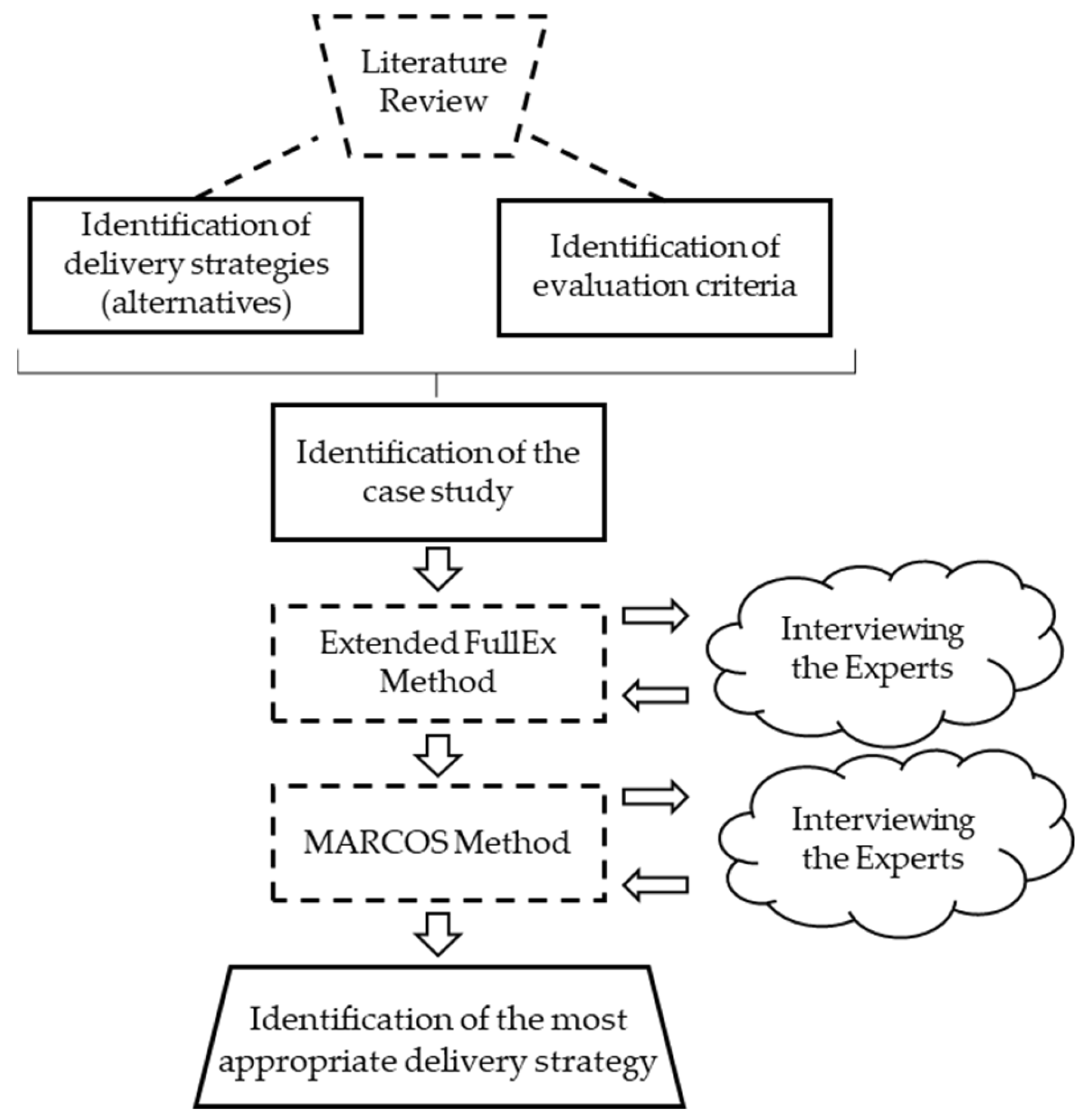

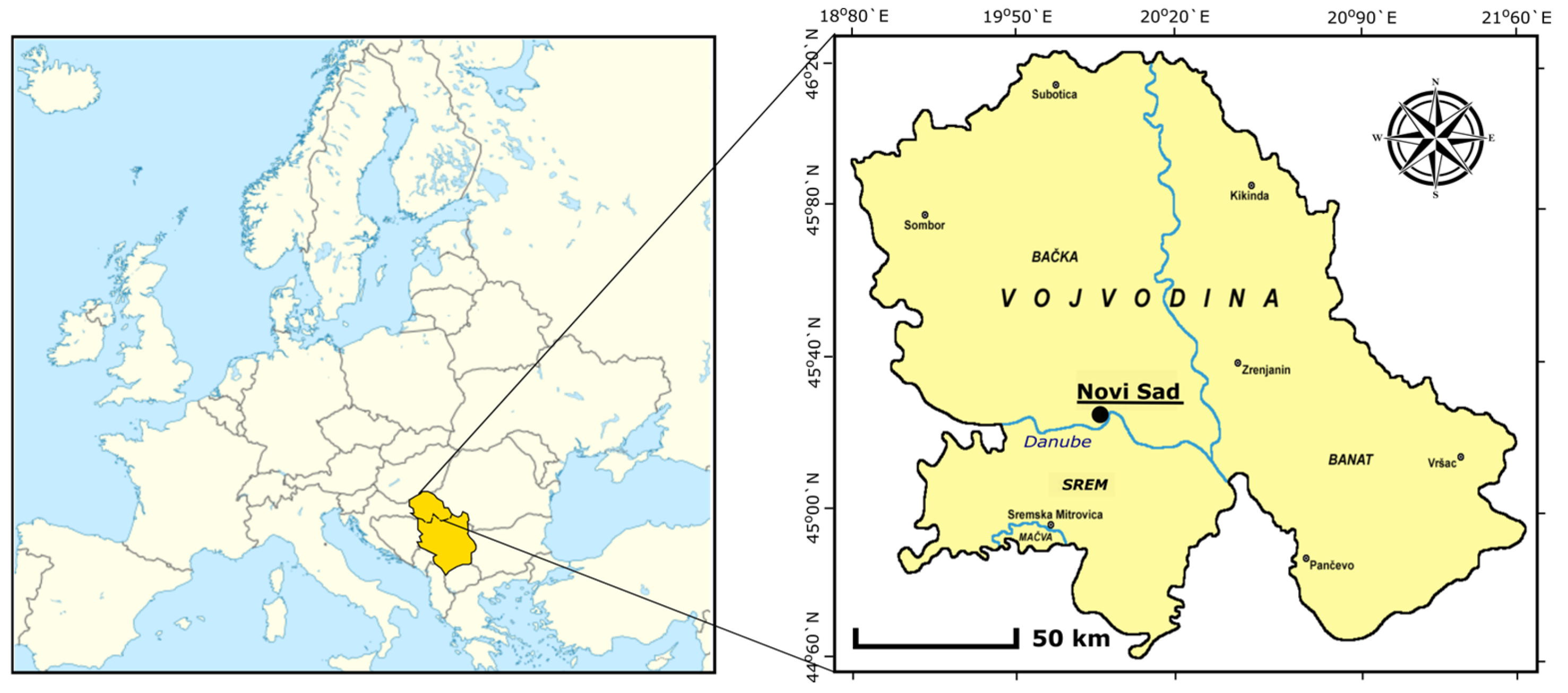
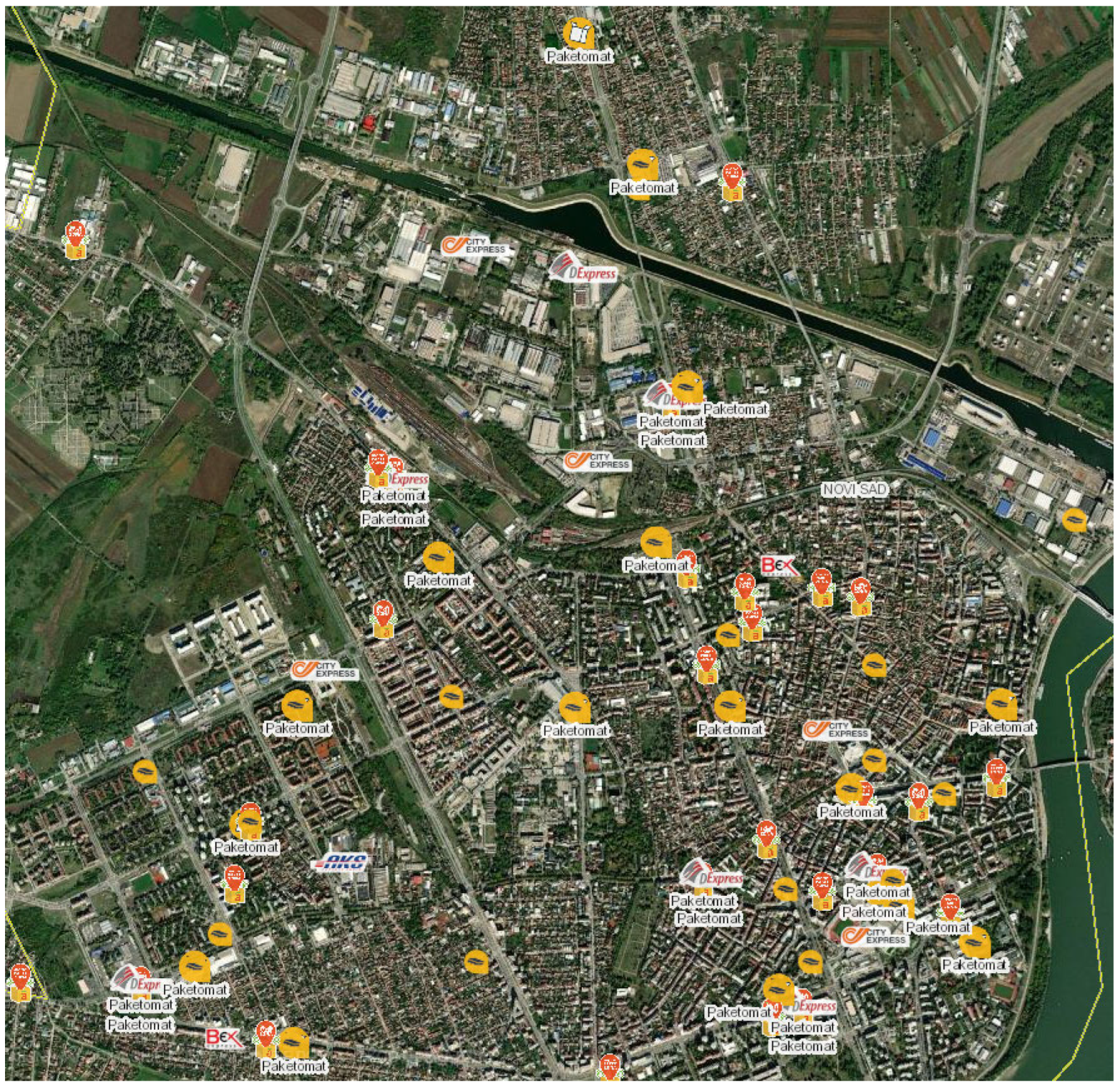

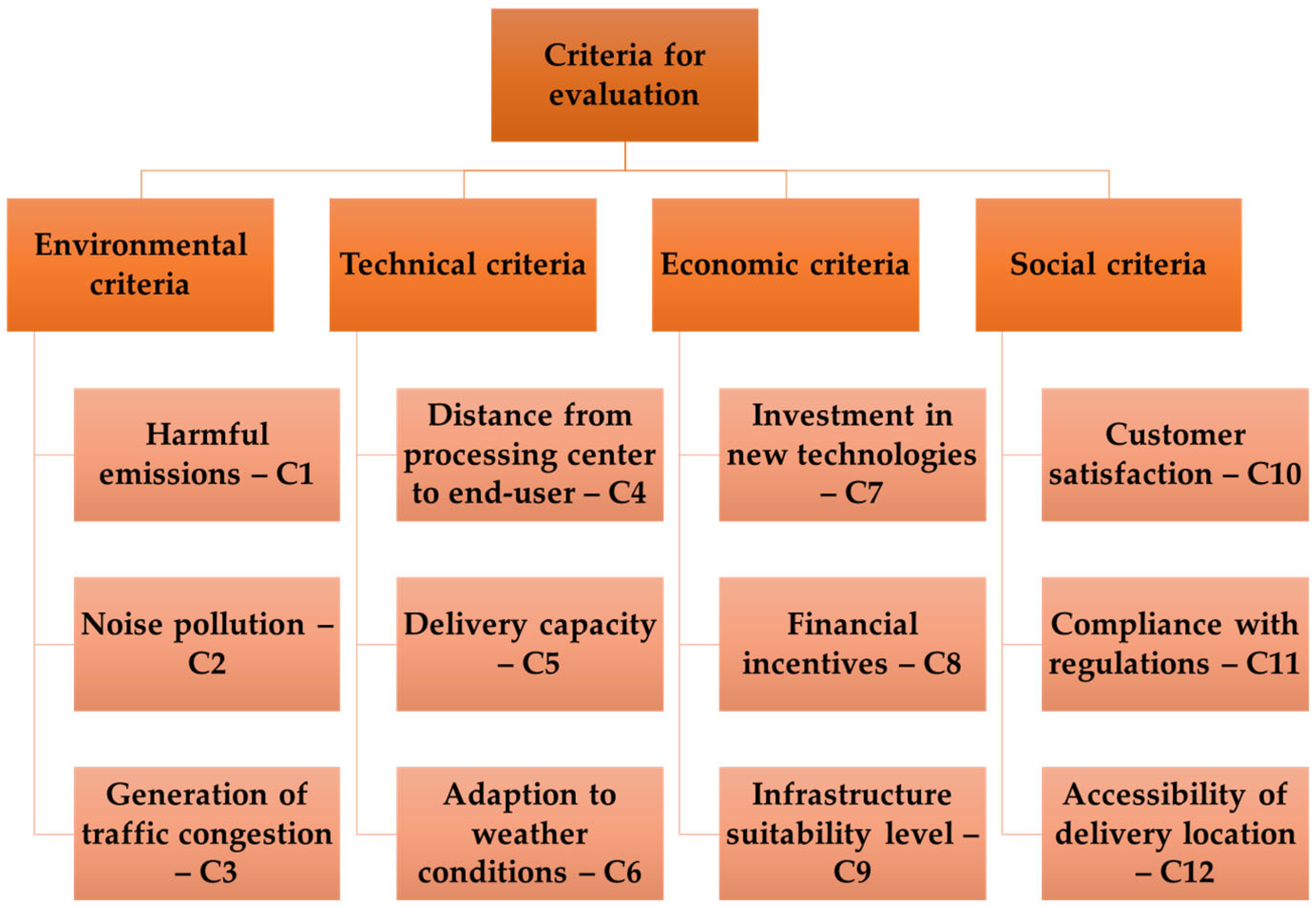
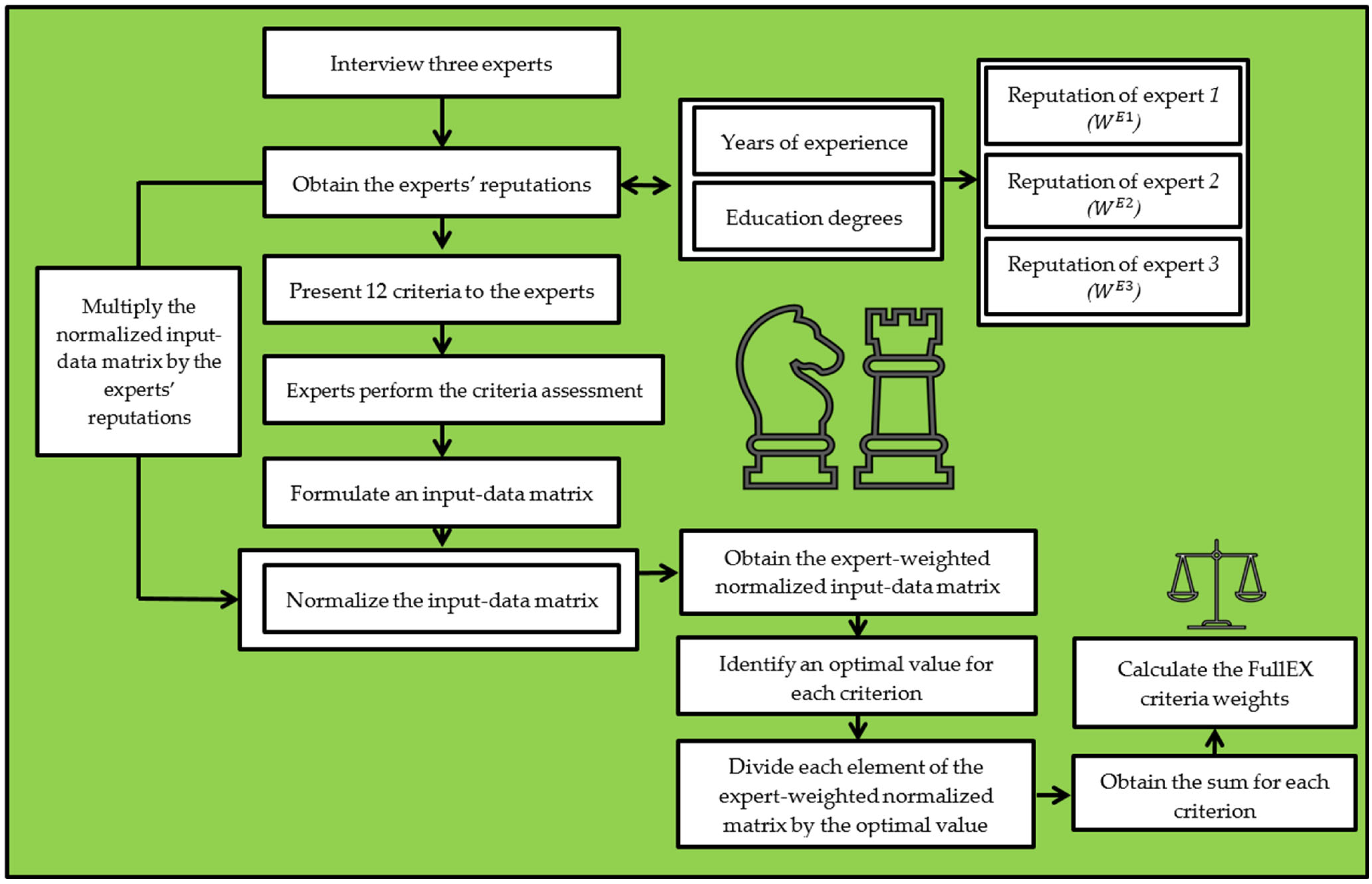
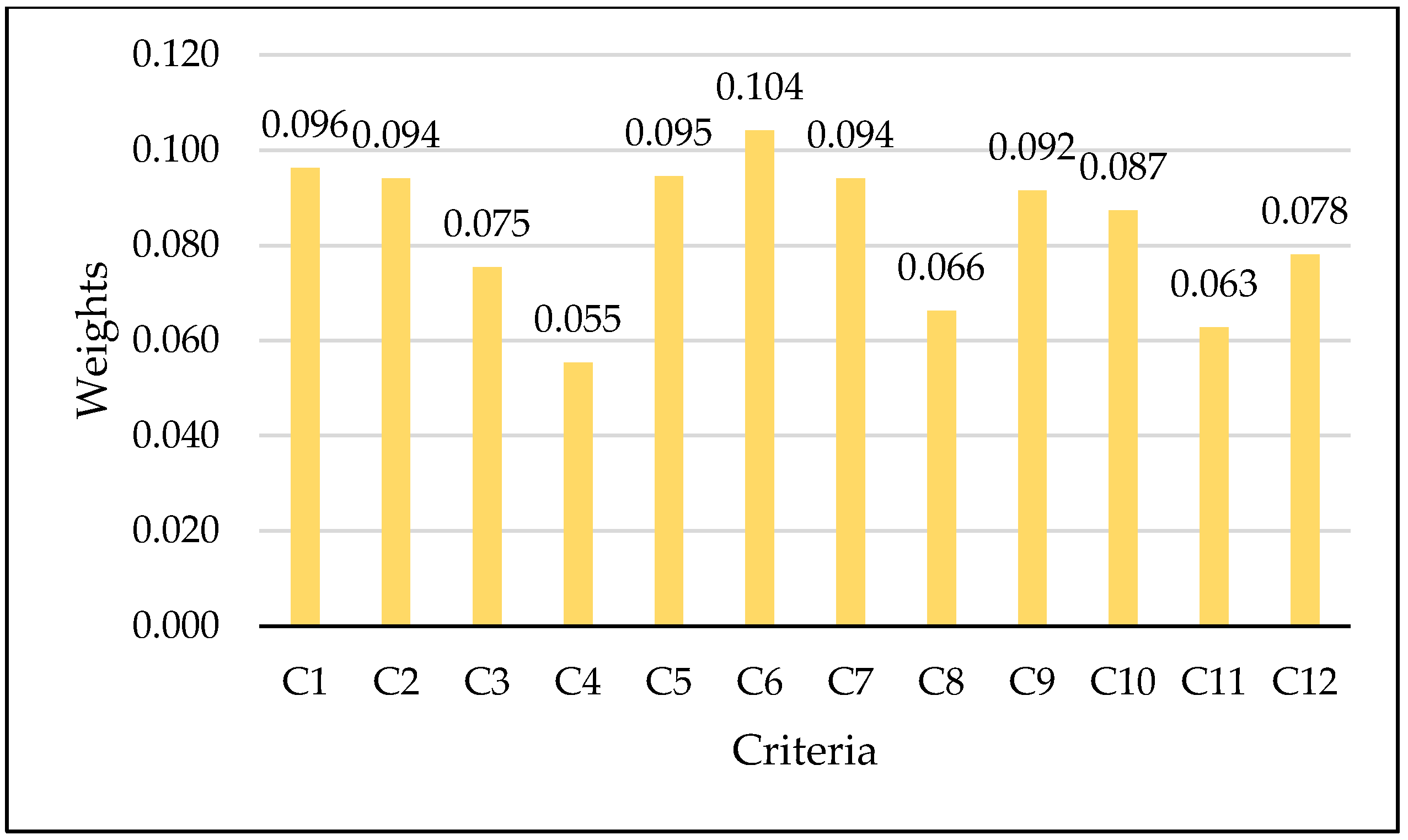

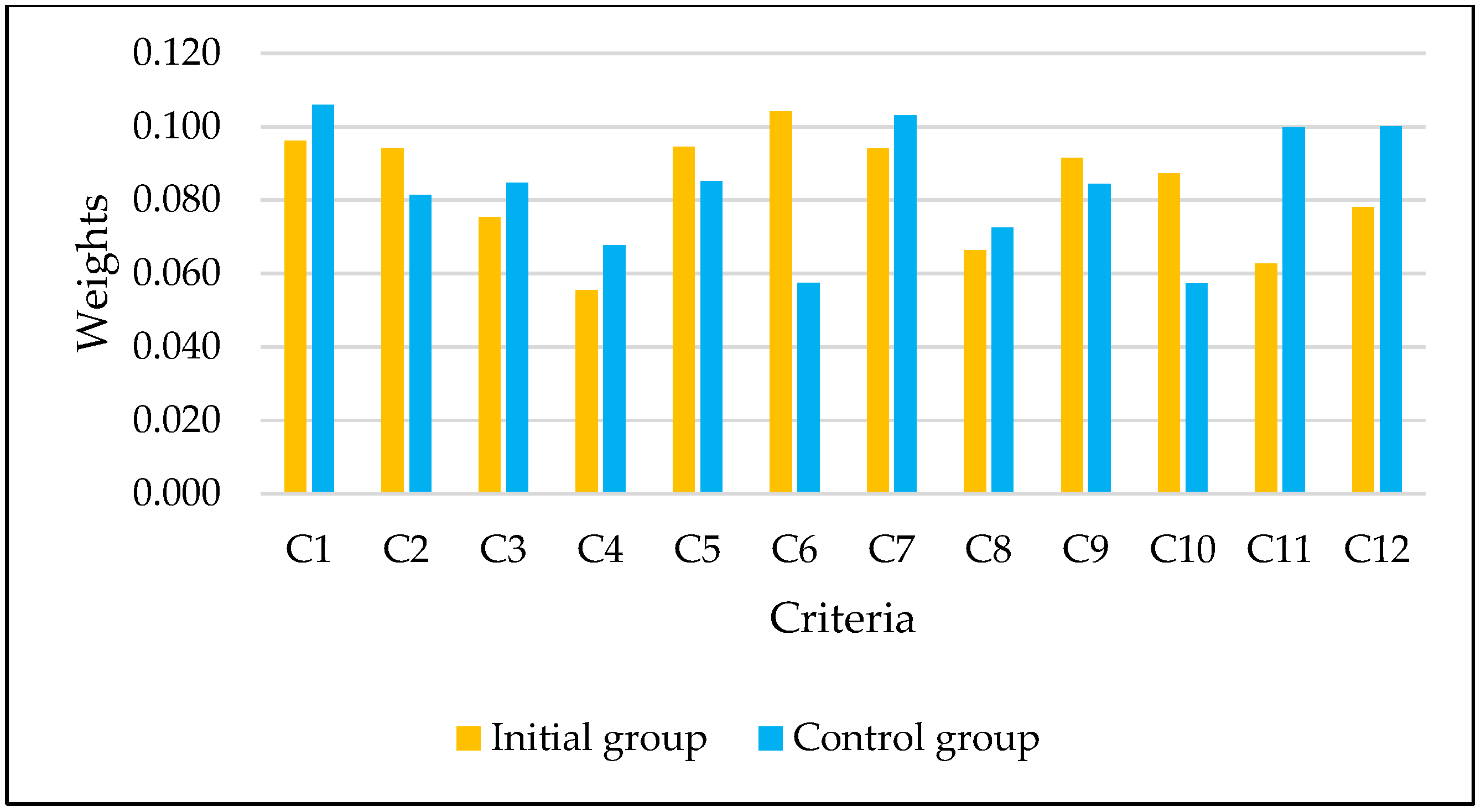

| Method | Pairwise Comparison Scale | Experts Included | The Expert’s Experience | The Expert’s Educational Degree |
|---|---|---|---|---|
| AHP | 1–9 (Saaty’s scale) | Yes | No | No |
| SWARA | 1–9 | Yes | No | No |
| BWM | 1–9 | Yes | No | No |
| FUCOM | Integer/Decimal | Yes | No | No |
| CIMAS | Binary | Yes | Yes | No |
| FullEx | Binary | Yes | Yes | Yes |
| Experts/Criteria | … | … | ||||
|---|---|---|---|---|---|---|
| … | … | … | ||||
| … | … | … | ||||
| … | … | … | … | … | ||
| … | … | … |
| Experts/Criteria | … | … | ||||
|---|---|---|---|---|---|---|
| … | … | |||||
| … | … | |||||
| … | … | … | … | … | … | |
| … | … | |||||
| … | … |
| Label | Alternatives | Key Description |
|---|---|---|
| A1 | Traditional Model—Status Quo | Delivery from out-of-city centers, inefficient routing, high environmental impact, and increased parking demand. |
| A2 | Unified Consolidation | Centralized parcel consolidation, cost reduction, eco-friendly, diverse vehicles, and company collaboration. |
| A3 | Urban Hubs | Small in-city logistics centers, optimized delivery, sustainable transport, and potential traffic/parking issues. |
| A4 | Hybrid Delivery Model (Consolidation Center and Urban Hubs) | Combining a consolidation center and urban hubs, enhanced collaboration, eliminates route overlap, higher efficiency. |
| Criterion | Category | Key Description |
|---|---|---|
| C1: Harmful Emissions | Environmental | Emissions depend on vehicle number, type, and delivery frequency; innovative technologies reduce emissions. |
| C2: Noise Pollution | Environmental | Urban deliveries increase noise; smaller, eco-friendly vehicles reduce noise pollution. |
| C3: Traffic Congestion | Environmental | Centralized delivery and zero-emission vehicles reduce congestion and enhance urban mobility. |
| C4: Distance to End-User | Technical | Shorter distances improve efficiency, reduce costs, and lower emissions. |
| C5: Delivery Capacity | Technical | Varies by model; limited cargo space may delay subsequent deliveries. |
| C6: Adaptation to Weather | Technical | Reliable delivery models maintain efficiency in adverse weather conditions. |
| C7: Investment in Technologies | Economic | Costs for modernizing systems with ICT, eco-friendly vehicles, and AI technologies. |
| C8: Financial Incentives | Economic | Subsidies and tax breaks encourage sustainable delivery practices. |
| C9: Infrastructure Suitability | Economic | Delivery model feasibility depends on geographic and infrastructure conditions. |
| C10: Customer Satisfaction | Social | Timely delivery and good conditions are key to customer satisfaction. |
| C11: Compliance with Regulations | Social | Models must align with laws, urban planning, and competition rules. |
| C12: Accessibility of Delivery Locations | Social | Optimizing parking with smaller vehicles reduces congestion and infrastructure strain. |
| Experts | YE | ED | Expert Reputation () |
|---|---|---|---|
| E1 | 6 | 8 | 0.3553 |
| E2 | 8 | 4 | 0.2776 |
| E3 | 11 | 5 | 0.3671 |
| C1 | C2 | C3 | C4 | C5 | C6 | C7 | C8 | C9 | C10 | C11 | C12 | |
|---|---|---|---|---|---|---|---|---|---|---|---|---|
| E1 | 9 | 6 | 9 | 4 | 6 | 6 | 9 | 3 | 2 | 10 | 1 | 1 |
| E2 | 7 | 6 | 6 | 1 | 8 | 9 | 9 | 3 | 3 | 6 | 3 | 5 |
| E3 | 8 | 4 | 4 | 1 | 8 | 6 | 6 | 7 | 3 | 11 | 5 | 3 |
| C1 | C2 | C3 | C4 | C5 | C6 | C7 | C8 | C9 | C10 | C11 | C12 | |
|---|---|---|---|---|---|---|---|---|---|---|---|---|
| E1 | 0.375 | 0.375 | 0.474 | 0.667 | 0.273 | 0.286 | 0.375 | 0.231 | 0.250 | 0.370 | 0.111 | 0.111 |
| E2 | 0.292 | 0.375 | 0.316 | 0.167 | 0.364 | 0.429 | 0.375 | 0.231 | 0.375 | 0.222 | 0.333 | 0.556 |
| E3 | 0.333 | 0.250 | 0.211 | 0.167 | 0.364 | 0.286 | 0.250 | 0.538 | 0.375 | 0.407 | 0.556 | 0.333 |
| C1 | C2 | C3 | C4 | C5 | C6 | C7 | C8 | C9 | C10 | C11 | C12 | |
|---|---|---|---|---|---|---|---|---|---|---|---|---|
| E1 | 0.133 | 0.133 | 0.168 | 0.237 | 0.097 | 0.102 | 0.133 | 0.082 | 0.089 | 0.132 | 0.039 | 0.039 |
| E2 | 0.081 | 0.104 | 0.088 | 0.046 | 0.101 | 0.119 | 0.104 | 0.064 | 0.104 | 0.062 | 0.093 | 0.154 |
| E3 | 0.122 | 0.092 | 0.077 | 0.061 | 0.133 | 0.105 | 0.092 | 0.198 | 0.138 | 0.150 | 0.204 | 0.122 |
| C1 | C2 | C3 | C4 | C5 | C6 | C7 | C8 | C9 | C10 | C11 | C12 | |
|---|---|---|---|---|---|---|---|---|---|---|---|---|
| E1 | 1.000 | 1.000 | 1.000 | 1.000 | 0.726 | 0.853 | 1.000 | 0.415 | 0.645 | 0.880 | 0.194 | 0.256 |
| E2 | 0.608 | 0.781 | 0.521 | 0.195 | 0.756 | 1.000 | 0.781 | 0.324 | 0.756 | 0.413 | 0.454 | 1.000 |
| E3 | 0.918 | 0.689 | 0.459 | 0.258 | 1.000 | 0.881 | 0.689 | 1.000 | 1.000 | 1.000 | 1.000 | 0.793 |
| C1 | C2 | C3 | C4 | C5 | C6 | C7 | C8 | C9 | C10 | C11 | C12 | |
|---|---|---|---|---|---|---|---|---|---|---|---|---|
| A1 | 9.000 | 8.667 | 9.000 | 8.000 | 7.000 | 7.000 | 2.333 | 1.333 | 4.667 | 1.667 | 9.000 | 1.667 |
| A2 | 4.333 | 4.333 | 3.333 | 5.333 | 8.667 | 6.667 | 8.000 | 4.333 | 7.000 | 5.667 | 7.000 | 4.000 |
| A3 | 5.333 | 4.667 | 5.000 | 3.000 | 5.333 | 3.667 | 6.333 | 2.667 | 7.000 | 4.000 | 8.333 | 7.667 |
| A4 | 2.000 | 2.000 | 1.000 | 2.000 | 5.667 | 5.333 | 8.667 | 3.333 | 7.000 | 7.000 | 8.333 | 9.000 |
| Criteria | Expert 1 [%] | Expert 2 [%] | Expert 3 [%] | Average Assessment— | |||
|---|---|---|---|---|---|---|---|
| C1 | 0.0962 | 10 | 10 | 10 | 10.0000 | 0.3756 | 0.0038 |
| C2 | 0.0941 | 9 | 9 | 10 | 9.3333 | 0.0780 | 0.0008 |
| C3 | 0.0754 | 7 | 5 | 5 | 5.6667 | 1.8776 | 0.0188 |
| C4 | 0.0554 | 6 | 5 | 6 | 5.6667 | 0.1283 | 0.0013 |
| C5 | 0.0946 | 11 | 9 | 11 | 10.3333 | 0.8756 | 0.0088 |
| C6 | 0.1042 | 12 | 11 | 12 | 11.6667 | 1.2485 | 0.0125 |
| C7 | 0.0941 | 9 | 10 | 12 | 10.3333 | 0.9220 | 0.0092 |
| C8 | 0.0663 | 5 | 6 | 5 | 5.3333 | 1.2922 | 0.0129 |
| C9 | 0.0915 | 11 | 9 | 8 | 9.3333 | 0.1829 | 0.0018 |
| C10 | 0.0873 | 9 | 11 | 9 | 9.6667 | 0.9322 | 0.0093 |
| C11 | 0.0628 | 5 | 7 | 7 | 6.3333 | 0.0567 | 0.0006 |
| C12 | 0.0781 | 6 | 8 | 5 | 6.3333 | 1.4739 | 0.0147 |
| RI = 0.0944 | |||||||
| Group of Experts | C1 | C2 | C3 | C4 | C5 | C6 | C7 | C8 | C9 | C10 | C11 | C12 |
|---|---|---|---|---|---|---|---|---|---|---|---|---|
| Initial group | 0.096 | 0.094 | 0.075 | 0.055 | 0.095 | 0.104 | 0.094 | 0.066 | 0.092 | 0.087 | 0.063 | 0.078 |
| Control group | 0.106 | 0.081 | 0.085 | 0.068 | 0.085 | 0.057 | 0.103 | 0.073 | 0.084 | 0.057 | 0.100 | 0.100 |
| Method | Order of Criteria Weights |
|---|---|
| AHP | C10 > C1 > C7 > C11 > C5 > C3 > C2 > C6 > C8 > C9 > C12 > C4 |
| CIMAS | C8 > C6 > C12 > C10 > C4 > C9 > C5 > C1 > C11 > C2 > C7 > C3 |
| Extended Fullex | C6 > C1 > C5 > C2 > C7 > C9 > C10 > C12 > C3 > C8 > C11 > C4 |
Disclaimer/Publisher’s Note: The statements, opinions and data contained in all publications are solely those of the individual author(s) and contributor(s) and not of MDPI and/or the editor(s). MDPI and/or the editor(s) disclaim responsibility for any injury to people or property resulting from any ideas, methods, instructions or products referred to in the content. |
© 2025 by the authors. Licensee MDPI, Basel, Switzerland. This article is an open access article distributed under the terms and conditions of the Creative Commons Attribution (CC BY) license (https://creativecommons.org/licenses/by/4.0/).
Share and Cite
Ninović, M.; Dobrodolac, M.; Bošković, S.; Dupljanin, Đ.; Lazarević, D.; Dumnić, S. An Extended FullEX Method: An Application to the Selection of Online Orders Distribution Modes Based on the Shared Economy. J. Theor. Appl. Electron. Commer. Res. 2025, 20, 207. https://doi.org/10.3390/jtaer20030207
Ninović M, Dobrodolac M, Bošković S, Dupljanin Đ, Lazarević D, Dumnić S. An Extended FullEX Method: An Application to the Selection of Online Orders Distribution Modes Based on the Shared Economy. Journal of Theoretical and Applied Electronic Commerce Research. 2025; 20(3):207. https://doi.org/10.3390/jtaer20030207
Chicago/Turabian StyleNinović, Milena, Momčilo Dobrodolac, Sara Bošković, Đorđije Dupljanin, Dragan Lazarević, and Slaviša Dumnić. 2025. "An Extended FullEX Method: An Application to the Selection of Online Orders Distribution Modes Based on the Shared Economy" Journal of Theoretical and Applied Electronic Commerce Research 20, no. 3: 207. https://doi.org/10.3390/jtaer20030207
APA StyleNinović, M., Dobrodolac, M., Bošković, S., Dupljanin, Đ., Lazarević, D., & Dumnić, S. (2025). An Extended FullEX Method: An Application to the Selection of Online Orders Distribution Modes Based on the Shared Economy. Journal of Theoretical and Applied Electronic Commerce Research, 20(3), 207. https://doi.org/10.3390/jtaer20030207







